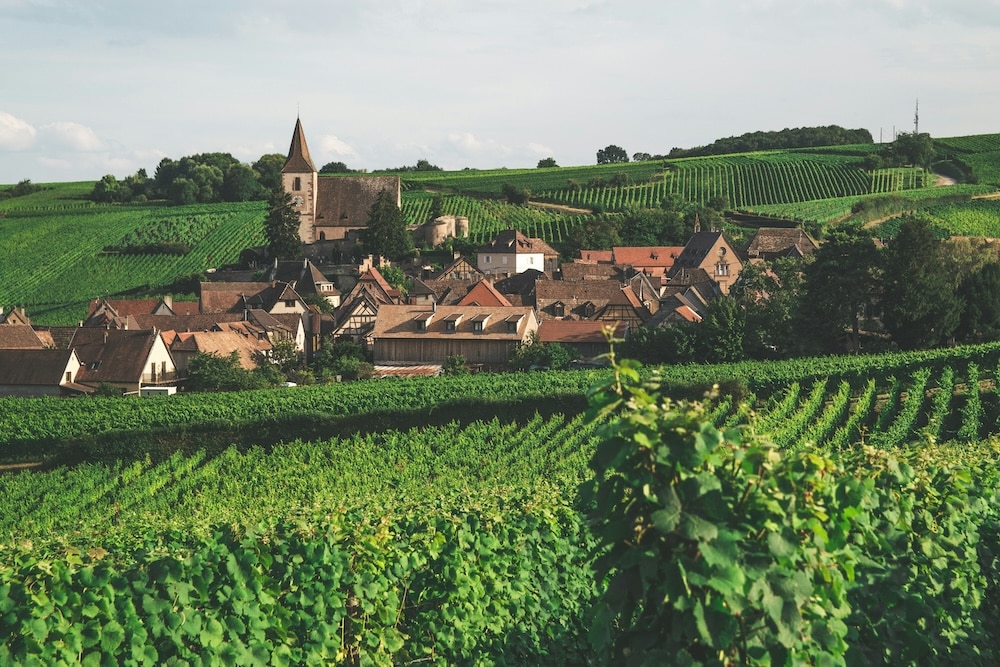Photo by Sue Winston
When it comes to the world of wine, few countries can boast a legacy as rich and enduring as France. What distinguishes French wines from the rest of the world is the unwavering commitment to the concept of “terroir” – a “sense of place” that combines the qualities of climate, soil, terrain, and traditions. This focus on terroir has given birth to some of the most celebrated wines globally.
SUBSCRIBE TO THE MAGAZINE
In a land where the very essence of viticulture is rooted in the soil, French winemakers have long understood that the magic of a wine lies not solely in the grape, but in the unique tapestry of the earth and climate that nurtures it. While grape varieties certainly play a pivotal role, they are just one thread in the greater fabric of terroir. This is why, above all else, the region where the grape is grown is crucial to the bottle’s story.

It’s worth noting that while regions take center stage, they are far from homogeneous. French wine regions, from the sun-kissed vineyards of Provence to the misty slopes of Alsace, produce a variety of flavors and qualities that are each wildly unique. Read on to discover the 10 main wine regions of France and uncover the terroir that makes them each so exceptional.
1. Bordeaux

Bordeaux is synonymous with elegance and sophistication. This region is divided into several subregions, including the Left Bank and the Right Bank, each with its own unique terroir. Bordeaux is famous for its Cabernet Sauvignon, Merlot, and Cabernet Franc. The region’s gravelly soils along the Gironde River contribute to the rich, full-bodied flavors in wines from the Médoc, while the limestone soils of Saint-Émilion and Pomerol produce velvety and plump Merlots.
2. Burgundy

Burgundy (also known as Bourgogne in French) is the Holy Grail for wine enthusiasts, especially Pinot Noir and Chardonnay lovers. The Côte d’Or, with its intricate mosaic of vineyards, showcases the significance of diversity in terroir. From the chalky soils of Chablis to the limestone-rich soils of Côte de Nuits and Côte de Beaune, each plot produces wines with distinct nuances of flavor and aroma that are among some of the most expensive in the world.
3. Champagne

Champagne and its eponymous wine need no introduction. The unique chalky terroir of the Champagne region in northern France plays a vital role in creating the crisp acidity and refined effervescence of this world-famous sparkling wine. From the chalky hillsides to the underground cellars, Champagne has become synonymous with luxury.
4. Rhône Valley

The Rhône Valley is known for its bold and expressive wines that often grow on slopes and hills. In the northern part, the granite soils give rise to Syrah, producing intense and peppery flavors. In the south, the hot Mediterranean climate and rocky soils create powerful Grenache-based wines. Terroir here is about the marriage of sun-soaked earth and diverse growing landscape.
5. Loire Valley

The Loire Valley is a paradise for wine diversity. From the crisp, mineral-driven Sauvignon Blancs of Sancerre to the floral and fruity Chenin Blancs of Vouvray, the terroir of the Loire region reflects the multitude of microclimates and soils, allowing the production of an array of wine styles that are as characteristic as the numerous châteaux that dot the region.
6. Alsace

Alsace, the region at the foothills of the Vosges mountains bordering Germany is the land of aromatic, dry, and fruity white wines. The unique terroir of this region, with its mix of volcanic soils, marl, and limestone, gives life to wines like Riesling, Gewürztraminer, and Pinot Gris. Terroir here is a poetic dance of fragrance and finesse with Germanic tradition.
7. Provence

Provence, bathed in the Mediterranean sun, is the heartland of rosé wine. Not only is Provence the oldest wine region in France (producing wine for over 2,600 years!) but it is also the only region that dedicates almost all of its production to rosé. Its stony soils, hot climate, and the Mistral wind create a terroir that fosters the perfect conditions for the production of pale, aromatic, and refreshing pink wine. Sipping Provence rosé is like tasting sunshine in a glass.
8. Languedoc-Roussillon

In the South of France, the Languedoc-Roussillon region offers a diverse terroir that is perhaps the most underrated wine producing region. From the rugged limestone soils of Minervois to the coastal vineyards of Roussillon to the mountainous hills of Corbières, this region produces an eclectic mix of wines that account for more than a third of the country’s entire wine output. Terroir here is all about embracing the wild, untamed beauty of the landscape.
9. Jura

The Jura region remains a hidden gem, with a unique terroir. The limestone soils and cool climate result in wines like Vin Jaune and Vin de Paille, both intriguing and captivating in their own right. Terroir in Jura is a journey back in time, to centuries-old winemaking traditions.
10. Corsica

Corsica, the Mediterranean island off the southern coast of France, has a distinctive terroir influenced by the sea breeze, granite soils, and a multitude of grape varieties. Vermentino and Nielluccio are a couple of the stars, creating wines that are fresh and lively, capturing the essence of the island’s character boasting feisty Italian influence.
French wine regions offer a treasure trove of flavors and experiences, all deeply rooted in the concept of terroir. Each region has a unique story to tell, a history to share, and a glass to offer. Exploring the terroirs of France is not just about sipping wine; it’s a journey through time, tradition, and the art of winemaking.
